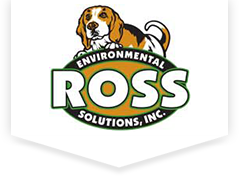Mice & Rat Inspection Checklist & Use of Tracking Powder & UV Lights to Help Confirm Rodent Infestations in Mount Holly, NJ
It’s imperative to do a rodent inspection before starting any rodent control. When the rodent is at its highest period of activity during the day is the best time to do the inspection. This ideal time is at dusk or just after dark. Inspections should from the outside of the home or structure to the inside. Any areas that provide rats and mice with water, food and nesting need to be looked at first.
Signs to Look for in a Rodent Inspection; Droppings, Tracks, Damage, Grease Marks & More
Rat & Mouse Droppings. Recent droppings are softer than older ones and are darker in color. The color will help you figure out how current the population is with higher numbers of droppings meaning a higher population.
Rodent Tracks Identification. These will include footprints with tail drags in rats as mice don’t drag their tails and will be found in dusty areas. If you think an area is being frequented by rodents, you can do a light dusting of baby powder or flour to see if rodents are using the area as a pathway. Soil that is wet will also show signs of activity.
Mouse & Rat Chewing Damage. Gnaw marks that are more recent will be rougher around the edges than older ones. Mice will create clean-cut holes while rats create rougher edges. Mouse holes are 1-1/2 inches in diameter and rat holes can be 2 or more inches in diameter. Rats will even gnaw on door corners, flooring and ceiling joists, as well as wall studs.
Rat & Mice Holes & Burrows. Rats will typically burrow along walls and foundations and below shrubs and debris. The entrance will look smoother and compact. Mice may burrow but most holes are found below slabs within a building. They will use cracks in slabs and under expansion joints to gain entry. To determine if a burrow is active, you can place a crumpled piece of paper at the entrance. If it’s removed the next day, then it’s active.
Rodents Runways. Runways will be found between feeding and nesting areas. Rats will use the same path and are easier to identify than that of a mouse. Pathways outside will be narrow and packed. Inside, you will find the pathways along walls as the walls provide them with guidance. You can also look for runways around stored boxes or behind appliances and furniture.
Rat & Mouse Grease Marks. Grease marks are caused by oily hair and are found around rafters, pipes, beams, vertical surfaces and active runways that are absent of cobwebs and dust. Older grease marks become smeared and dry.
Rat & Mouse Urine Stains & Odors. You can find urine stains left by rodents with a UV black light and the odor associated with rodents tends to be musky.
Rodent Scratching Sounds & Rat Chirping Noises. Rodents’ teeth are very hard and they will gnaw on hard surfaces to get inside or while searching for food. Clawing, gnawing and scratching sounds are common and will be heard in the walls or the ceiling at night. Sounds out of the ordinary should be investigated.
Pets Acting Strange. Your pets can give you an indication the rodents are present. Pets can become excited or upset when the rodents first enter the home but will show less signs the longer they stay. If you notice your pet acting strange or pawing, have a look around.
Rodent Control & Removal Services
Contact Ross Environmental Solutions to do a complete rodent inspection to identify the rodent species you are having issues with. We can remove the rodents from your home and seal all entry points to prevent future invasions!


